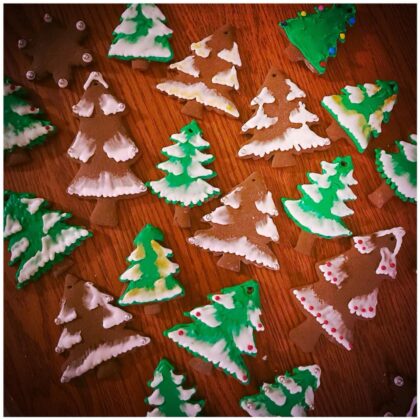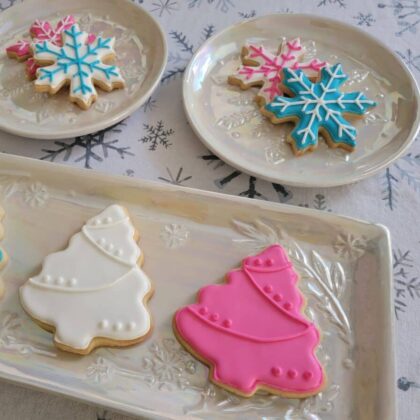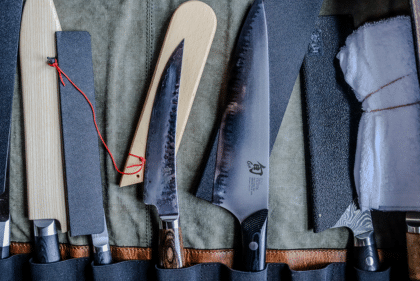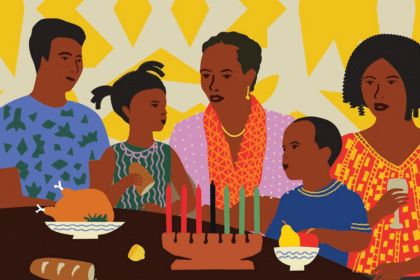The Edible Art of Decorated Cookies

Of all baked sweets, surely decorated cookies are the most universally adored.
After all a cookie, in the original Dutch a koekje, can be thought of as a tiny cake like the Dutch term from which it derives — koek. With a koek you get a slice; with a koekje you can eat the whole thing. And maybe another.
While many cakes get decorated, often elaborately, the diminutive cookie provides a unique opportunity for decoration to challenge the decorated for supremacy.



The simplest decorated cookie, still made today, pays homage to 14th century Swiss springerle, and has a rustic simplicity. A sturdy, well-spiced dough was molded, stamped or firmly rolled over with a rolling pin carved with designs often inspired by the bible. Like stained glass windows, these edible image cookies could be used to teach the illiterate about religion.
Springerle evolved from woodcut printing where an image is deeply incised in the wood into which the dough is pressed filling the recesses to create a relief of the image — Christ, a saint, a bird in flight.



Around the turn of the 15th-century Lebkuchen were being made by Franconian monks in Nürnberg from a fermented, honey-sweetened, highly spiced dough. Ginger, cardamom, allspice, clove, nutmeg, and cinnamon, then as now, were associated with Christmas and Christmas sweets. As exotic spices were rare and expensive, and the cost of sugar prohibitive, for a time this restricted cookie production to the wily monastics, guild professionals, and wealthy households. Then, as now, anything precious was inherently desirable. Times change: traditions evolve.



Two things made the modern decorated cookie possible — the cookie cutter and royal icing. Once the ingredients became more affordable, and the cookie cutter replaced the wooden cookie stamps, molds, and rolling pins, the activity began to resemble the widely available art form; some might say compulsion that it has become.
When the move was made in the mid-19th-century from impressed image to the outline of a recognizable shape, the responsibility shifted to the cookie decorator to define the image — a leaf, a star, an angel, a jingle bell or candy cane, a little house or a Christmas tree, a Santa, his sleigh, a reindeer, a snowflake, a snowman, an entire alphabet, and the inevitable gingerbread man and women.
Casual, renegade, or painstakingly precise, all of what makes art — line, color, shape, texture, and form — are all in play.
And you thought it was “just a cookie.”
We should not take the whimsical nature of the secular subject matter to indicate that a masterfully decorated Christmas cookie lacks gravitas. Ok, some are meant to merely amuse, but some can provoke a sentimental reaction, some can have an historic significance or be part of a family tradition, others explore a theme, and a few still make a religious connection. Always remember that the subject is secondary to the skill and degree of artisanship brought to bear.

The relentless, dedicated decorated Christmas cookie maker does not make one-offs, a single stand-alone masterpiece, but rather a dozen or dozens of nearly identical treats. Art of the cookie in the age of reproduction accepts that each iteration of the same subject/topic is a one-off masquerading as the original. Or, giving in to deep inner urges, you could make each one a variation on the theme as in Monet’s 30 views of Rouen cathedral — multiple images of a single shape.


It doesn’t take much to get to the “too beautiful to eat” category. In fact, it might be wise to stand back and admire your work once the amount of icing equals the weight of the cookie supporting it. These specimens are most likely to be boxed, wrapped, ribboned, and given as gifts.
Today, the culture of the decorated Christmas Cookie is widely embraced, and the Cookie Swap party is among its best manifestations. The cookie swap provides an opportunity to show off your talents and tastes, appreciate, taste, and acquire the artful works of others, and establish a tradition of community.Whether you use color liquids or gels, multi-colored sanding sugar, sugar pearls or sprinkles, applied with piping bags and tips, squeeze bottles, tweezers or toothpicks, a palette knife, or paintbrush … now is the time. Make the dough one day. Bake on another. Begin decorating the next. See the finished cookie in your mind’s eye. Create. Master the ordinary; aspire to the extraordinary.










